Wisdom teeth
Cost of Wisdom Teeth Removal
| Wisdom Teeth Position | Cost (Mong Kok and Jordan Clinic) | Cost (Central Clinic) |
|---|---|---|
| Non Surgical Extraction of Upper Wisdom Tooth | $2000 | $2500 |
| Surgical Extraction of Upper Wisdom Tooth | $4000 | $5000 |
| Non Surgical Extraction of Lower Wisdom Tooth | $4000 | $5000 |
| Surgical Extraction of Lower Wisdom Tooth | $4000 | $5000 |
The cost includes extraction, post-operative medications, sutures and suture removal.
Guide to Understanding Wisdom Teeth
Wisdom teeth, also known as third molars, mark a significant phase in dental development. This guide aims to demystify the complexities surrounding these molars, shedding light on their definition, anatomy, associated issues, indications for removal, and the crucial importance of timely extraction for overall oral health.
Definition and Anatomy of Wisdom Teeth
Wisdom teeth are the last set of molars located at the back of the mouth. They typically emerge in late adolescence or early adulthood. Contrary to their name, these molars do not bestow wisdom; instead, they pose unique challenges due to their late arrival.
The anatomy of wisdom teeth is characterized by their position at the end of the dental arch, often making them challenging to clean and prone to various dental issues.
Common Issues Associated with Wisdom Teeth Removal
The emergence of wisdom teeth removal can lead to a range of complications:
- Impaction: Wisdom teeth may not have sufficient space to fully emerge, leading to impaction against neighboring teeth or the jawbone.
- Misalignment: Limited space in the jaw can result in wisdom teeth growing at odd angles, causing misalignment and potential damage to adjacent teeth.
- Infection and Inflammation: The partially erupted nature of wisdom teeth can create pockets that trap food particles, fostering bacterial growth and increasing the risk of infection.
- Cysts and Tumors: In rare cases, wisdom teeth can develop cysts or tumors, further complicating oral health.
Indications for Wisdom Teeth Removal
Several signs may indicate the necessity for wisdom teeth removal:
- Pain and Discomfort: Persistent pain or discomfort in the back of the mouth may signal issues with wisdom teeth.
- Swelling and Redness: Inflammation and redness in the gum tissue surrounding the wisdom teeth can be indicative of problems.
- Difficulty in Cleaning: Due to their location, wisdom teeth are challenging to clean properly, making them prone to decay and gum disease.
- Jaw Stiffness: Discomfort or stiffness in the jaw, especially while eating, may point to problems with wisdom teeth.
Importance of Timely Removal for Oral Health:
Timely removal of wisdom teeth is a proactive measure that contributes significantly to overall oral health:
- Prevention of Complications: Early removal helps prevent potential complications such as impaction, misalignment, and infection, safeguarding adjacent teeth and the jaw.
- Preservation of Orthodontic Treatments: Individuals who have undergone orthodontic treatments to achieve proper teeth alignment may find wisdom teeth removal crucial in preserving the achieved results.
- Risk Reduction: Timely removal minimizes the risk of developing cysts, tumors, and other serious conditions associated with wisdom teeth.
- Pain Management: Addressing potential issues before they escalate helps manage and prevent pain and discomfort associated with problematic wisdom teeth.
A Detailed Exploration of the Wisdom Teeth Removal Procedure
Step-by-Step Breakdown of the Wisdom Teeth Removal Process:
Initial Consultation:
The process typically begins with an initial consultation. During this appointment, the dental professional assesses the patient’s oral health, takes X-rays to determine the position of the wisdom teeth, and discusses the recommended course of action.
Treatment Planning:
Based on the assessment, the dental team devises a personalized treatment plan. This plan outlines the number of wisdom teeth to be removed, the chosen extraction technique, and any additional considerations, such as the need for sedation.
Anesthesia Administration:
Before the extraction begins, anesthesia is administered to ensure the patient’s comfort. The type of anesthesia can vary, ranging from local anesthesia to general anesthesia, depending on the complexity of the extraction and the patient’s preferences.
Incision or Sectioning (if Necessary):
In cases where the wisdom teeth are impacted or have not fully erupted, the dentist may need to make an incision in the gum tissue or section the tooth into smaller pieces for easier removal.
Tooth Extraction:
Using specialized instruments, the dentist carefully extracts the wisdom tooth from its socket. The level of complexity determines the duration of the extraction process, with straightforward cases being relatively quick and uncomplicated.
Closure of the Extraction Site:
Once the tooth is removed, the extraction site is cleaned, and stitches may be placed to facilitate proper healing. In some cases, self-dissolving stitches are used, eliminating the need for a separate removal appointment.
Post-Operative Instructions:
Following the extraction, the dental team provides detailed post-operative instructions. These guidelines typically cover activities to avoid, proper oral hygiene practices, recommended pain management strategies, and when to schedule follow-up appointments.
Different Techniques and Approaches to Extraction
Simple Extraction:
Simple extractions involve removing fully erupted wisdom teeth with a straightforward extraction process. This technique is suitable for cases where the tooth is visible and easily accessible.
Surgical Extraction:
Surgical extractions are employed for impacted or partially erupted wisdom teeth. This technique may involve making an incision in the gum tissue, removing bone around the tooth, or sectioning the tooth for efficient extraction.
Sectional Extraction:
When a wisdom tooth is particularly large or challenging to extract in one piece, the dentist may opt for sectional extraction. This involves dividing the tooth into smaller sections for easier removal.
Anesthesia Options for Pain Management
Local Anesthesia:
Local anesthesia is commonly used for simple extractions. It numbs the specific area around the wisdom tooth, ensuring the patient remains pain-free during the procedure while remaining conscious.
Sedation Dentistry:
For patients with anxiety or those undergoing more complex extractions, sedation dentistry may be recommended. Options include oral sedatives, intravenous (IV) sedation, or general anesthesia. These methods induce varying levels of relaxation and, in the case of general anesthesia, unconsciousness throughout the procedure.
Pre-Operative Instructions and Preparations for Patients
Detailed Consultation:
Patients should attend a detailed consultation before the procedure to discuss their medical history, any current medications, and expectations for the extraction.
Fasting Instructions:
Depending on the type of anesthesia planned, patients may be required to fast for a specified period before the procedure. This reduces the risk of complications during sedation.
Arrangements for Transportation:
Patients undergoing sedation or general anesthesia should arrange for transportation to and from the dental clinic, as the effects of these medications can impair driving abilities.
Post-Operative Care Supplies:
It’s advisable for patients to have post-operative care supplies at home, including soft foods, pain medications, ice packs, and any prescribed antibiotics.
Clear Communication:
Patients are encouraged to communicate openly with the dental team, addressing any concerns or questions they may have before the extraction day.
A Guide to Wisdom Teeth Removal Recovery
Immediate Post-Operative Care and Instructions:
Gauze and Pressure:
Immediately after the procedure, patients are advised to bite gently on the provided gauze to control bleeding. Changing gauze regularly and maintaining gentle pressure helps promote clot formation.
Rest and Relaxation:
Rest is crucial in the initial hours after wisdom teeth removal. Avoiding strenuous activities and allowing the body to heal aids in a smoother wisdom teeth removal recovery.
Oral Hygiene Practices
While the extraction site should not be brushed directly, maintaining good oral hygiene is vital. Rinsing with a gentle saltwater solution after meals helps keep the mouth clean.
Medication Adherence:
Patients are prescribed pain medications and, if applicable, antibiotics. Adhering to the prescribed medication schedule is essential for effective pain management and preventing infection.
Managing Pain and Discomfort during the Recovery Period:
Pain Medications:
Over-the-counter or prescribed pain medications should be taken as directed to manage discomfort. Nonsteroidal anti-inflammatory drugs (NSAIDs) are often recommended to reduce pain and inflammation.
Ice Packs:
Applying ice packs to the cheeks in the first 24 hours helps minimize swelling and provides relief from pain. Ice packs should be used intermittently, with breaks in between.
Avoiding Certain Activities:
Activities that can increase blood flow to the head, such as bending or heavy lifting, should be avoided in the initial days to prevent complications and minimize pain.
Elevation:
Elevating the head while sleeping can help reduce swelling and promote better blood circulation, contributing to a more comfortable wisdom teeth removal recovery.
Dietary Guidelines and Restrictions:
Soft and Liquid Diet:
In the immediate post-operative period, a soft and liquid diet is recommended to avoid placing stress on the extraction sites. Soups, yogurt, smoothies, and mashed foods are suitable options.
Avoiding Certain Foods:
Patients should steer clear of hot, spicy, or acidic foods that can irritate the healing sites. Additionally, avoiding crunchy or hard foods is crucial to prevent damage to the surgical areas.
Hydration:
Staying hydrated is essential for overall well-being and aids in the healing process. Patients are encouraged to drink plenty of water and avoid using straws, as the suction motion can disrupt clot formation.
Gradual Introduction of Solid Foods:
As the wisdom teeth removal recovery progresses, the diet can gradually transition to include softer solid foods. This transition should align with the guidance provided by the dental team.
Potential Complications and How to Address Them:
Excessive Bleeding:
While some bleeding is normal initially, excessive bleeding may indicate an issue. Patients should contact their dental provider if bleeding persists beyond the first day.
Infection:
Signs of infection include persistent swelling, redness, and increased pain. Following proper oral hygiene practices and taking prescribed antibiotics can help prevent and address infections.
Dry Socket:
A dry socket occurs when the blood clot at the extraction site dislodges prematurely. This can result in severe pain. Avoiding activities that create suction, such as smoking, and following post-operative care instructions can reduce the risk of dry socket.
Nerve Damage:
While rare, nerve damage can occur during wisdom teeth removal. Symptoms include numbness or tingling in the lips, tongue, or chin. Reporting any unusual sensations to the dental team is crucial for prompt evaluation and intervention.
Potential Complications and How to Address Them:
First 24 Hours:
The immediate post-operative period involves managing bleeding, resting, and adhering to prescribed medications. Ice packs can be applied to minimize swelling.
2-3 Days Post-Operatively:
Swelling typically peaks within the first 48 hours and gradually subsides. Patients should continue with a soft diet and follow oral hygiene practices.
1 Week Post-Operatively:
By the end of the first week, most patients experience reduced pain and swelling. Follow-up appointments may be scheduled to monitor healing.
2 Weeks Post-Operatively:
Patients often find that they can reintroduce a more varied diet as the extraction sites continue to heal. Follow-up appointments help assess progress.
3-4 Weeks Post-Operatively:
By the end of the third to fourth week, most patients have fully recovered, experiencing minimal discomfort. Any residual symptoms should be discussed with the dental team.
Decoding Wisdom Teeth Removal Costs in Hong Kong: A Transparent Insight from Nixon Dental
Understanding the wisdom teeth removal HK breakdown of costs associated with wisdom teeth removal is essential for patients seeking clarity and transparency in their dental expenses. At Nixon Dental, the following wisdom teeth removal cost breakdown is provided:
Non-Surgical Removal of Upper Wisdom Teeth: $2000 (Mongkok and Jordan Clinic) / 2500 (Central Cinic)
This wisdom teeth removal cost option covers the non-surgical extraction of fully erupted upper wisdom teeth, a relatively straightforward wisdom teeth removal HK procedure.
Surgical Removal of Upper Wisdom Teeth: $4000 (Mongkok and Jordan Clinic) / 5000 (Central Cinic)
Surgical removal of upper wisdom teeth involves additional techniques and expertise, reflecting the higher wisdom teeth removal cost associated with more complex extractions.
Non-Surgical Removal of Lower Wisdom Teeth: $4000 (Mongkok and Jordan Clinic) / 5000 (Central Cinic)
Similar to the upper wisdom teeth, the wisdom teeth removal cost for non-surgical removal of fully erupted lower wisdom teeth considers the simplicity of the extraction process.
Surgical Removal of Lower Wisdom Teeth: $4000 (Mongkok and Jordan Clinic) / 5000 (Central Cinic)
Surgical removal of lower wisdom teeth, often more intricate due to proximity to nerves and sinuses, incurs a wisdom teeth removal cost reflective of the additional skills and precautions required.
Impacted Wisdom teeth
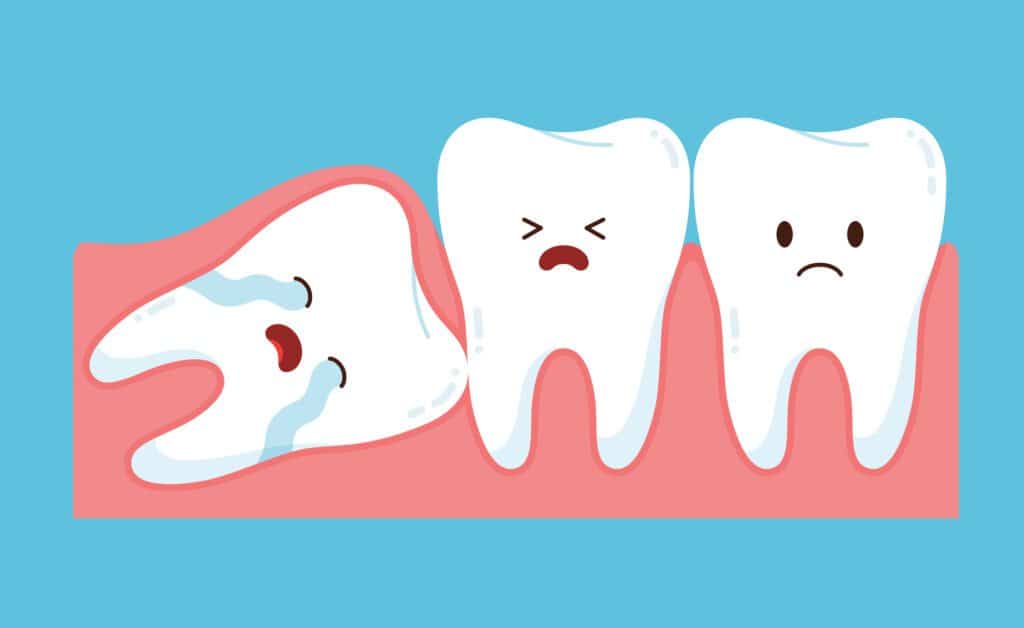
What are Horizontally Impacted Wisdom Teeth?
Transverse wisdom teeth mean that the growth angle of wisdom teeth is different, and the angle of growth is lying horizontally. In fact, the Impacted Wisdom Tooth is only one of the types of Impacted Wisdom Tooth. Impacted wisdom teeth can be classified according to their degree and angle.
If differentiated according to the degree of impact, impacted smart teeth can be divided into partially impacted wisdom teeth and fully impacted wisdom teeth. Semi-impacted smart teeth mean that only some of the wisdom teeth have come out, and since some of the wisdom teeth are exposed, the tooth extraction procedure will be simpler. Total impacted wisdom teeth refer to wisdom teeth that are not exposed at all, because wisdom teeth cannot be seen, so wisdom teeth are generally located deeper into the tooth bone, and tooth extraction is more complicated.
If distinguished by the angle of intelligent teeth, it can be divided into mesially/distally impacted, horizontally impacted, and Vertically impacted. The angle deviation of transverse wisdom teeth is large, which belongs to more complex wisdom tooth surgery.
How do I know if I have Wisdom Teeth?
Generally speaking, partially impacted wisdom teeth have been exposed on the top of the tooth, and the angle of the exposed part of the tooth alone can determine whether the wisdom tooth is a transverse wisdom tooth. However, in some cases, such as fully impacted smart teeth and decayed smart teeth, X-rays may be required to determine the angle and position of the wisdom teeth.
In the past, dentists generally used traditional full mouth X-rays (OPG) to assist in the diagnosis of wisdom teeth, but the above X-rays are 2D planes and cannot accurately determine the relationship between wisdom teeth and nerve lines. Therefore, 3D CBCT CT is now used to accurately determine the position of nerves and reduce the risk of surgery.
Problems with Wisdom Teeth
Because wisdom teeth grow horizontally, wisdom teeth and front teeth have a greater chance of ingesting food debris and causing inflammation. In addition, the wisdom teeth will be covered with gums, and there may be dirt and dirt between the gums and wisdom teeth, resulting in wisdom tooth pain.
In addition, the horizontal intelligent tooth against the front of the large tooth can cause periodontal disease and tooth decay in other large teeth.
Wisdom Toothache
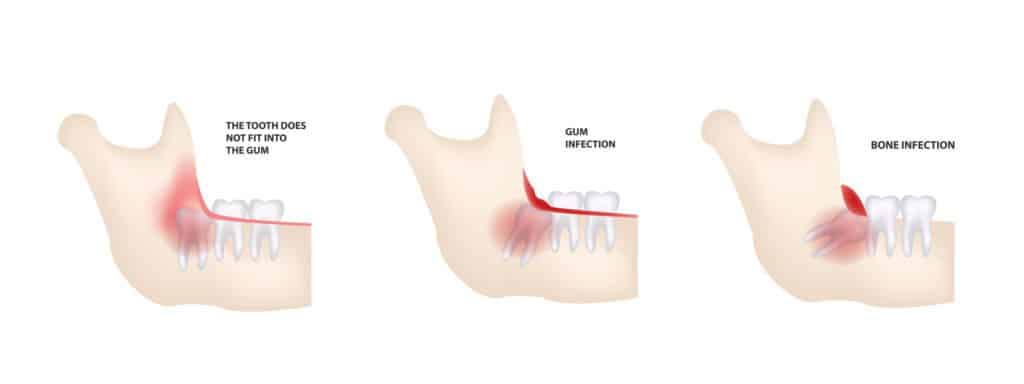
Causes of wisdom tooth-ache
There are two main causes of wisdom tooth pain: tooth decay and inflammation of wisdom teeth (pericoronitis)
Tooth decay can affect wisdom teeth and the large teeth next to them, and when cavities penetrate deep into the nerves, it can cause smart tooth pain.
Inflammation of wisdom teeth is pericoronitis, which refers to inflammation and swelling of the gums near wisdom teeth, often on wisdom teeth that are not fully grown in the lower jaw.
Because wisdom teeth grow late, there is a lot of room for growth, so the growth angle will be skewed, and in severe cases, horizontal wisdom teeth will be formed. Due to the angle deflection and the inability to grow completely, the flesh of the tooth will partially cover the surface of the wisdom tooth, and it is difficult to clean the middle between the tooth flesh and the wisdom tooth, resulting in the accumulation of a large number of bacteria and causing inflammation.
In mild cases, the tooth flesh is swollen and painful, and in severe cases, the mouth will not be able to open normally, and the chin position will also be swollen and painful.
Risk factors for wisdom toothache
If you don’t have enough room for wisdom teeth to grow and form transverse or lateral wisdom teeth, you have a higher chance of pericoronitis.
If your oral care is inadequate and not cleaned properly, it will also increase the risk of wisdom tooth inflammation and tooth decay.
Stress and emotions can also affect your immune system, making it less effective and more likely to cause inflammation of your smart teeth.
Symptoms of inflammation of wisdom teeth (pericoronitis).
Inflammation of wisdom teeth (pericoronitis) has many symptoms, including:
- Wisdom toothache
- Swollen gums of wisdom teeth
- Drainage of pus
- Failed to open his mouth
- Pain when swallowing
- Run a fever
- Poor appetite
- Bad taste in the mouth
Treatment of wisdom tooth-ache
There are several treatments for smart teeth:
- Self-care: Be diligent in cleaning the smart tooth position to reduce food debris that accumulates in the smart tooth location
- Warm salt water/mouthwash: Use the above aids to help with cleaning
- Anti-inflammatory painkillers: This cranial medication soothes discomfort caused by inflammation of the gums
- Antibiotics: Doctors may handle this cranial drug to help the body fight bacteria
- Wisdom tooth removal: Wisdom tooth removal is the most direct way to deal with wisdom teeth
Wisdom Teeth Removal
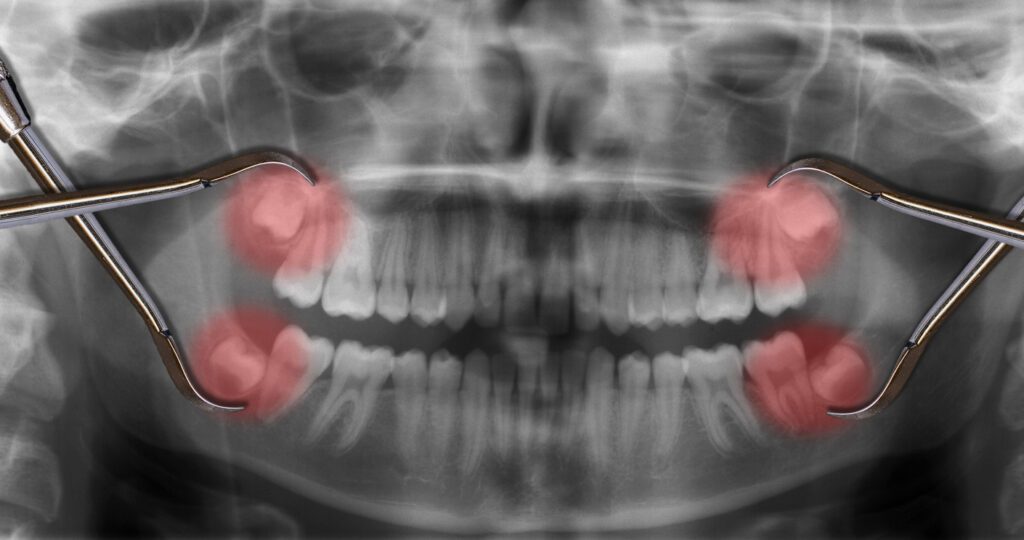
What is wisdom tooth removal?
If the smart tooth does not fully erupt and often becomes inflamed, it needs to be removed. In general, upper smart teeth can be removed non-surgically, while lower smart teeth covered by flesh mostly need to be removed surgically. The lower smart tooth is closer to the nerve line, so the surgical risk is higher. Computed tomography can clearly show the distance between the smart tooth and the lower alveolar nerve, which not only allows you to understand the actual risks of surgery before tooth extraction, but also allows doctors to perform surgical extraction safely and accurately.
What are the main causes of wisdom tooth removal?
If there is no problem with your wisdom teeth, your dentist will not usually recommend or recommend that you remove your wisdom teeth under normal circumstances. If you really need to peel your smart teeth, most of them are because they don’t have enough space to grow, or the growth position is incorrect, which will cause some pain or discomfort. Moreover, they usually appear in the position inside the mouth, and because of this position, it is difficult to clean thoroughly, so it will be more perishable.
How to define “a smart tooth has a problem” and there is a need to peel the wisdom tooth, usually the following situations occur:
- The wisdom tooth grows obliquely towards the next tooth
- Smart teeth tend to grow obliquely at the back of the mouth
- Wisdom teeth grow at right angles to other teeth, just like growing laterally in the jawbone
- Wisdom teeth grow up or down like other teeth, but are trapped in the jawbone and do not grow out
The process of wisdom teeth extraction
Wisdom tooth extraction is different from ordinary tooth extraction because some wisdom teeth that are too deeply hidden may require surgical extraction:
The dentist will first inject the patient with anesthetics, which are divided into local anesthesia and general anesthesia, and the wisdom tooth removal surgery process can be roughly divided into the following 5 stages:
- Make an incision in the gum tissue
- Remove the alveolar bone that wraps around the tooth
- When there is a chance, it may be necessary to divide the tooth into several parts and remove it
- Clean debris from teeth or bones
- Finally, the wound is sutured and the bleeding is stopped
Wisdom Tooth Examination and Extraction Steps
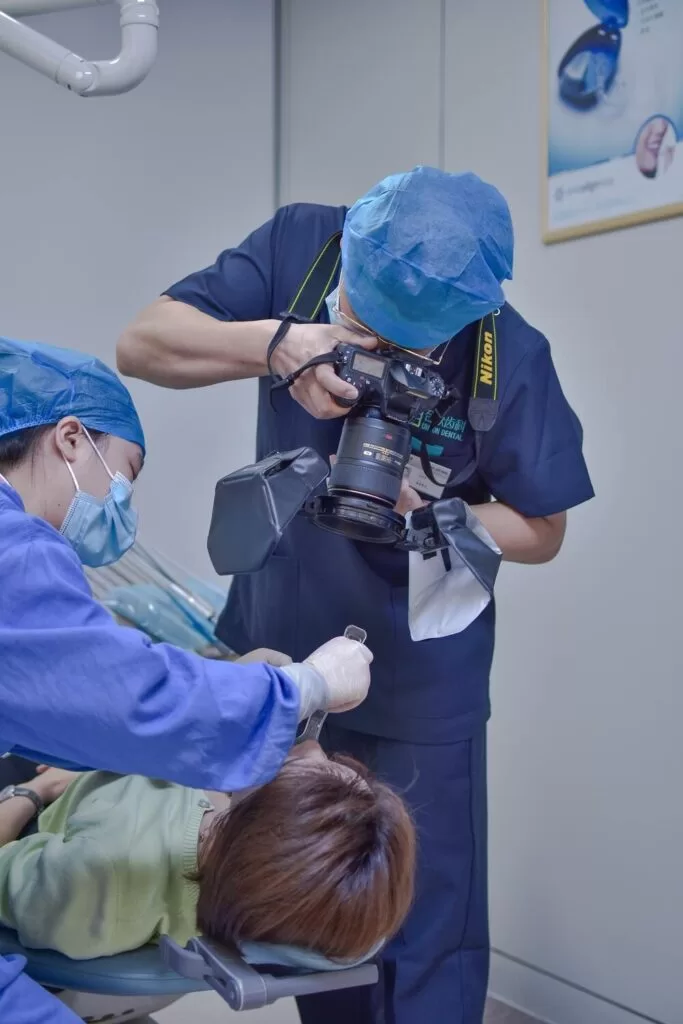
Comprehensive oral examination
Your doctor will first perform a comprehensive oral examination, including tooth decay and preliminary periodontal disease examination, to ensure that other dental problems are not overlooked. The doctor will then take a picture of your mouth and record it.
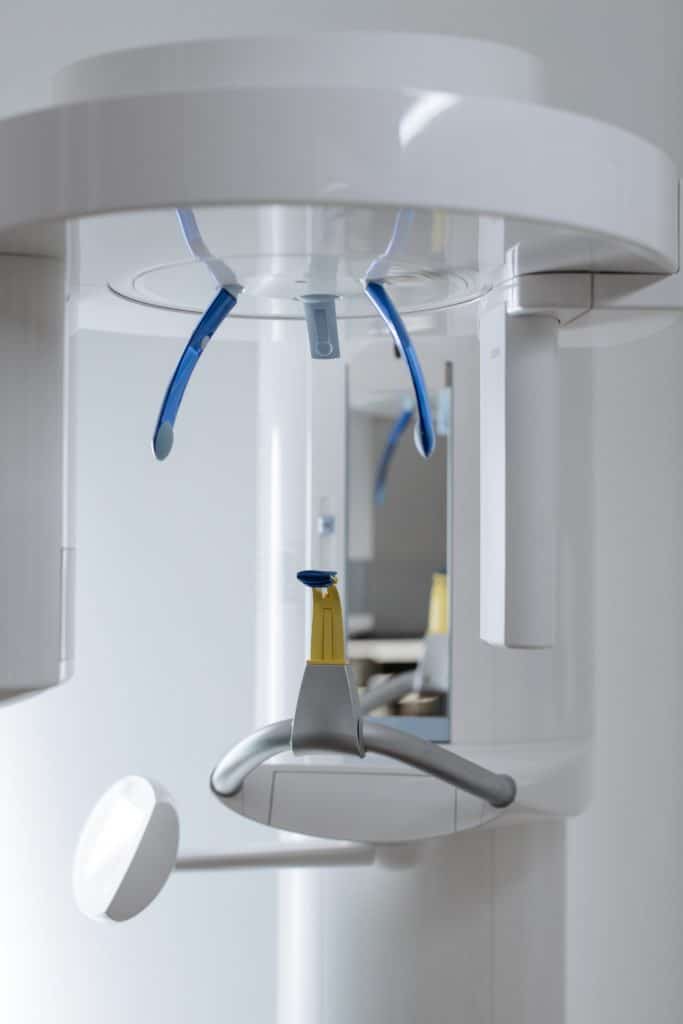
Orthopantomogram OPG or Cone Beam Computed Tomography
We will take a full mouth X-ray (OPG) or Cone Beam Computed Topography for each patient who consults smart teeth to help determine the position, angle, existing problems, future problems and relationship with the lower alveolar nerve of the wisdom tooth, so as to formulate a suitable tooth extraction plan.
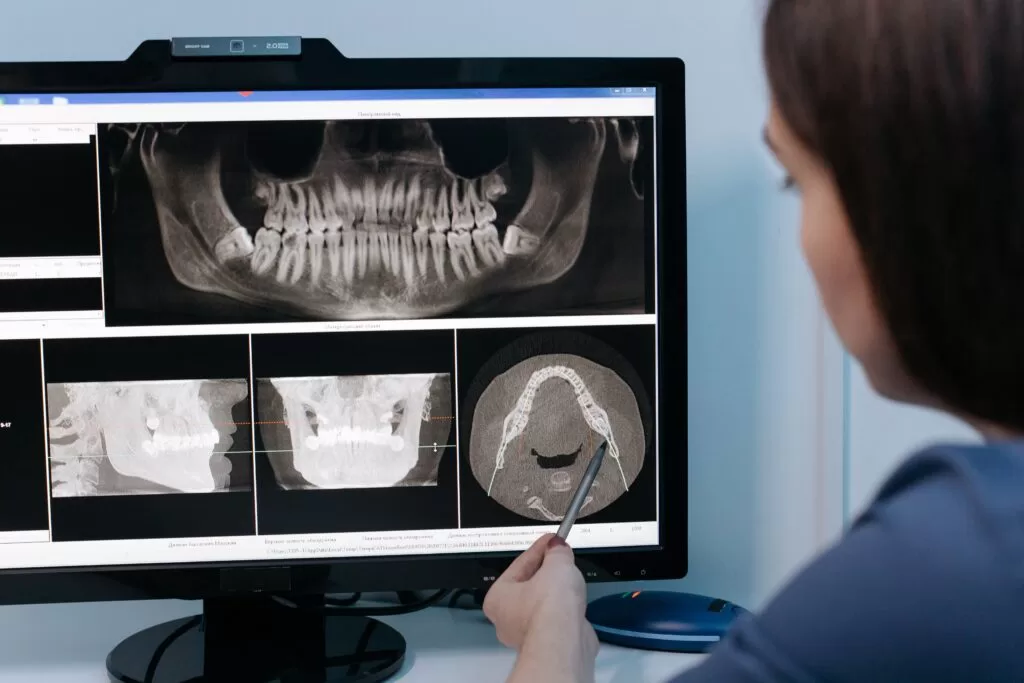
Surgical or non-surgical wisdom tooth extraction
After formulating a suitable tooth extraction plan, the doctor will explain the contents and risks of the operation, and when you clearly understand and sign the consent form, you will remove your smart teeth for the operation. After the smart tooth surgery, the doctor will stitch your wound.

Follow-up and stitch removal
Two weeks after the surgery, you will need to come back to the clinic for a follow-up appointment and have the stitches removed for you.
Unveiling the Importance of Wisdom Teeth Removal
Nixon Dental's Expertise in Wisdom Teeth Removal
Nixon Dental stands as a beacon of oral health in Hong Kong, specializing in expert wisdom teeth removal services. Here’s why our clinic is the preferred choice for individuals seeking wisdom teeth removal HK optimal oral care:
Skilled Dental Team:
At the core of Nixon Dental’s expertise is a skilled wisdom teeth removal HK team of dental professionals. Our wisdom teeth removal HK practitioners are experienced in wisdom teeth removal, ensuring precision and minimal discomfort for patients.
State-of-the-Art Facilities:
Equipped with state-of-the-art facilities, Nixon Dental provides a conducive environment for safe and efficient wisdom teeth removal procedures. Our wisdom teeth removal HK advanced technology enhances diagnostics and treatment planning.
Personalized Care Approach:
Wisdom teeth removal HK recognizing that every patient is unique, Nixon Dental adopts a personalized approach to wisdom teeth removal. We consider individual factors, ensuring tailored solutions for optimal results for wisdom teeth removal HK.
Transparency in Procedures:
Nixon Dental values transparency. Patients are informed about the entire wisdom teeth removal process, from pre-operative assessments to post-operative care. This wisdom teeth removal process is transparency fosters trust and empowers individuals to make informed decisions.
Emphasis on Comfort:
We understand that wisdom teeth removal procedures can be intimidating. Nixon Dental prioritizes patient comfort, employing techniques and anesthesia options to ensure a relaxed and pain-free experience during wisdom teeth removal.
Frequently Asked Questions (FAQ)
If wisdom teeth do not grow correctly, they may cause further dental problems, including damage to surrounding teeth, jaw damage, inflammation or infection of the gum tissue, which in the long run can worsen overall dental and oral health problems, necessitating wisdom teeth removal.
Non-surgical removal of upper wisdom teeth: $2500
Surgical Removal of upper wisdom Teeth: $4000
Non-surgical removal of lower wisdom teeth: $4000
Surgical removal of lower wisdom teeth: $4000
The cost includes extraction, post-operative medications, sutures and suture removal.
Before starting the extraction, your dentist will usually take an X-ray to see where the root of the tooth is and whether it is suitable to remove the wisdom tooth.
Wisdom teeth removal costs are influenced by the number and complexity of wisdom teeth, anesthesia options chosen, and any special considerations such as impacted teeth.
The wisdom teeth removal cost can vary based on whether the removal involves upper or lower wisdom teeth. Surgical procedures, especially for lower teeth, may incur slightly higher wisdom teeth removal cost.
Opting for the same-day removal of both upper and lower wisdom teeth can offer a bundled cost advantage, potentially reducing overall recovery expenses.
Wisdom teeth removal HK immediate post-operative period, including the first 24 to 48 hours, is crucial for managing bleeding and initial discomfort. During this time, patients should follow prescribed medications and rest recommendations.
Pain management options for wisdom teeth removal HK include prescribed medications, ice packs to reduce swelling, and avoiding activities that may increase discomfort during the initial wisdom teeth removal recovery phase.
A soft and liquid diet is recommended in the immediate post-operative period to avoid placing stress on the extraction sites. Patients can gradually reintroduce solid foods as the wisdom teeth removal recovery progresses.
Patients are advised to avoid strenuous activities in the first few days to minimize the risk of complications. Gradual resumption of normal activities is typically possible within a week or two.
Potential complications include excessive bleeding, infection, dry socket, and nerve damage. Recognizing warning signs and following post-operative care instructions can mitigate these risks.
Insurance coverage for wisdom teeth removal recovery costs varies. Patients are encouraged to review their dental insurance policies or consult with Nixon Dental’s team to understand the extent of coverage.
Nixon Dental understands that dental expenses can be significant. Flexible payment plans or financing options may be available to assist patients in managing wisdom teeth removal recovery costs.